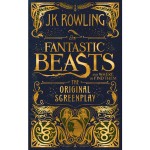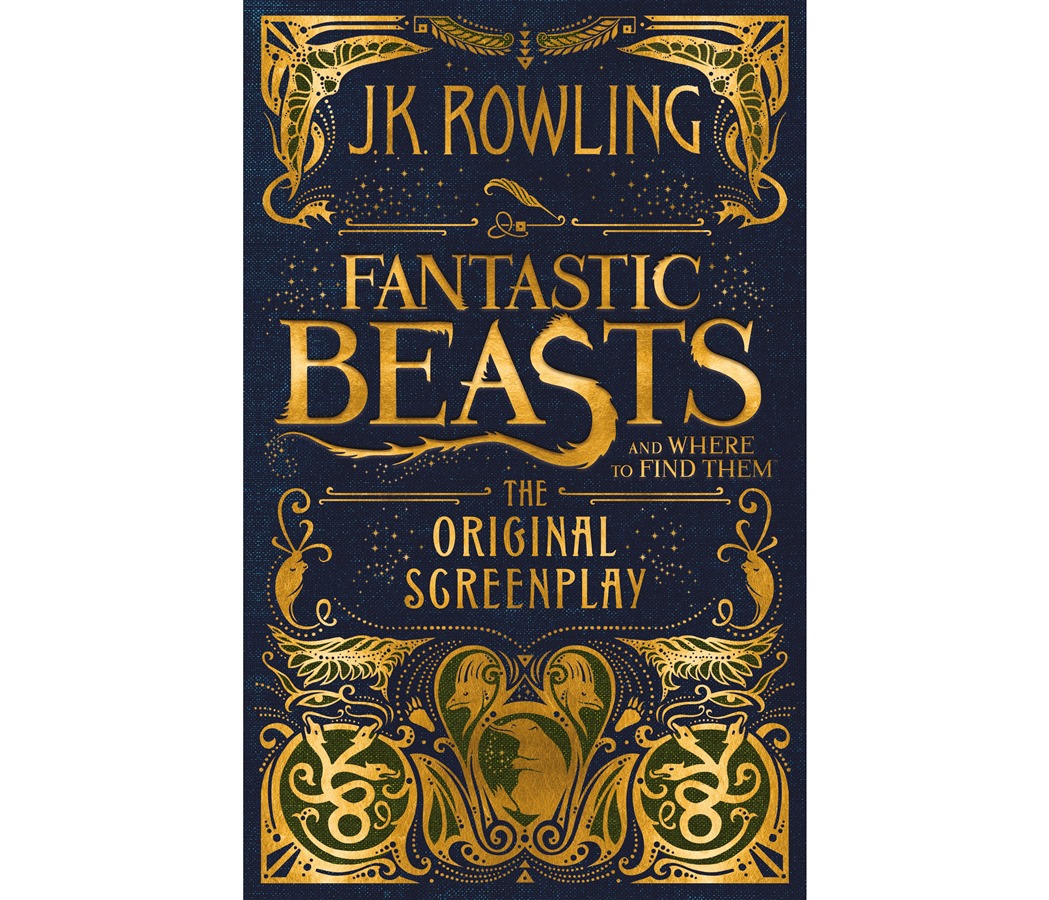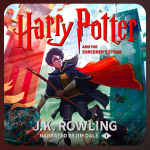Fantastic Beasts: The Published Script

Nov 16, 2016
Books, Fantastic Beasts, J.K. Rowling, News
As excitement ensues for the Fantastic Beasts film(s) let us not forget we have something else coming our way: the publication of another Rowling work–the publication of the Fantastic Beasts screenplay. Like Harry Potter and the Cursed Child, this is technically NOT another Harry Potter book. Cursed Child was a script for a play; Fantastic Beasts is a screen play. Both of these formats of writing are vastly different than a novel. However, Fantastic Beasts has one thing that Cursed Child does not: J.K. Rowling actually wrote it.
As we said of the movie, with J.K. Rowling making her screen writing debut, the films carry the same narrative voice, with all of the finesse and stylistic properties that makes Harry Potter and other Rowling works hugely successful. Fantastic Beasts feels very “Jo”–with its witty lines, complex characters, plot twists, attention to detail and serious themes that echoed throughout the Potter books. As exciting as it is, to soon be holding a new published Rowling writing in our hands, we much not forget that it is not another book or novel, and lose the expectations that come with those assumptions. By completely separating ourselves from the notion that this publication is going to be like another Potter book, we can enjoy the publication of Jo Rowling’s Fantastic Beasts screenplay much more fully.
When writing a screenplay, plotting, developing characters, and setting the scene all become stylistically (and vastly) different than similar components in a novel. As Jo Rowling has said many times throughout these last few weeks, writing a screenplay is a different beast than writing a novel, and something she learned how to do as she went through the process of composing her first screenplay. In preparation for its publication, Pottermore broke down the making, components, and reading process of a screenplay in a two-part article.
In the first article, Pottermore discussed the development of a script, writing:
“Careful mixing is also key to the development of a script. With a novel, it’s pretty much an author writing alone for a reader. Bringing a world to life on screen is very different. It’s the responsibility of a whole host of creatives, not always starting with the writer and hardly ever ending with them. A book might have one or two editors to shape its contents – a script’s creative life will involve dozens of people, from producers to directors to actors to composers to animators to designers… you get the picture.
“And of course, creating a screenplay is very different from writing a novel, because it is meant to be interpreted. ‘You’re not writing for an audience, you’re writing for a team to create something for an audience,’ says Rachel Marsh, a postgraduate researcher and lecturer in creative writing. TV screenwriter Rob Williams agrees. ‘With a script, you’re keenly aware that you’re writing a blueprint, something that will be interpreted by your collaborators.’
“Every collaboration is different, but typically a screenwriter might receive feedback on early drafts from the script’s commissioner – usually the producer – and perhaps from the film studio and agents of the various parties. Often, the level of input might step up a gear when a film finds its director, who will look particularly at how a writers’ words might be turned into action. As Helen Jacey explains, ‘a director will give notes until the shooting script – the approved version – is finalised.’
“The shooting script is the version of a screenplay that becomes the finished film – or at least the closest thing to it, because unlike a novel, a script never really stops evolving. A film, of course, then has to be cast, and designed, and ultimately, made.”
As Pottermore details, there are a number of rules a screenplay must follow. One of these rules is that a screen play is written with a three-part plot (three-act struture). This makes adapting complicated novels with tight plots (like Potter) incredibly difficult. For more details please, read the Pottermore article here.
Pottermore moved on from the beast of the screen play itself, to breaking down how to read a published screenplay. Reading a screenplay will be a different experience than reading a novel. One reason is that a screenplay has a different layout and structure–much like a script (i.e. Cursed Child). Pottermore helped prepare fans for this in their next piece, saying:
“Seeing it all laid out on the page will seem different because, like the Fantastic Beastsscreenplay, what you’re presented with is primarily dialogue. There will be some description, usually in the form of a location and some specific stage directions, but it’s often (though not always) minimal compared with what you might see in a book.
“Ah yes, stage directions. Those bits of writing in between the things the characters are saying. What do you do with those, when you can’t see them being acted out?
“‘For me stage directions are the key element in making scripts more like books. They give a sense of space and intention,’ says musical theatre actress Emma Williams, who reads a lot of stage scripts. So although they might seem minimal to a reader used to seeing long, descriptive prose, they serve a very important purpose: they tell you what’s going on in the scene, above and beyond what’s being said.”
“So all stories, whether on the page, stage or screen, require their audience to use their own judgment, and a healthy dose of imagination to fill in the gaps. It’s just that reading a screenplay provides more of those gaps through which you can create your own interpretation.
“Words are used in many ways – to give voice to characters, to describe scenes and events, to make sense of things. But perhaps in the case of the Fantastic Beastsscreenplay, it is in the spaces where words are used sparingly that we as readers can harness the not-so-Dark-Art of our own imaginations.”
Read Pottermore’s entire article on how to read a screenplay here.
This weekend, on Friday, November 18, fans will be queuing up for the Fantastic Beasts film. But the published screenplay by J.K. Rowling will also be landing on our doorsteps and on shelves of bookstores everywhere. There are many reasons to be excited at this dual expansion of the Wizarding World. See Fantastic Beasts and Where to Find Them in theaters this weekend, and get your copy of the screenplay from practically any book distributor. We cannot wait to begin this new journey, new era of the Wizarding World, with all of you!






